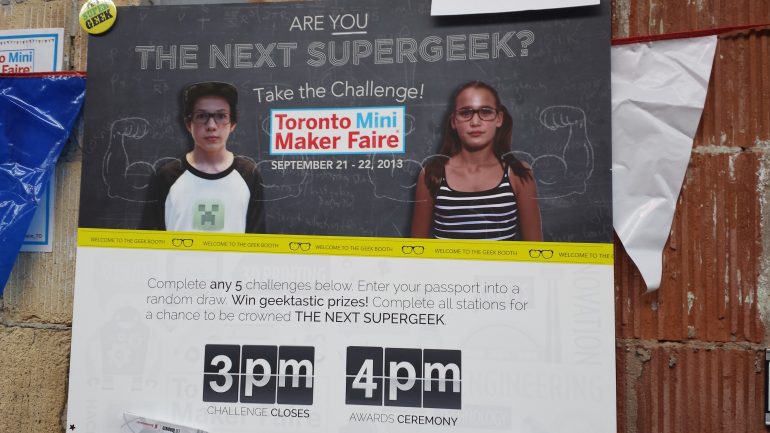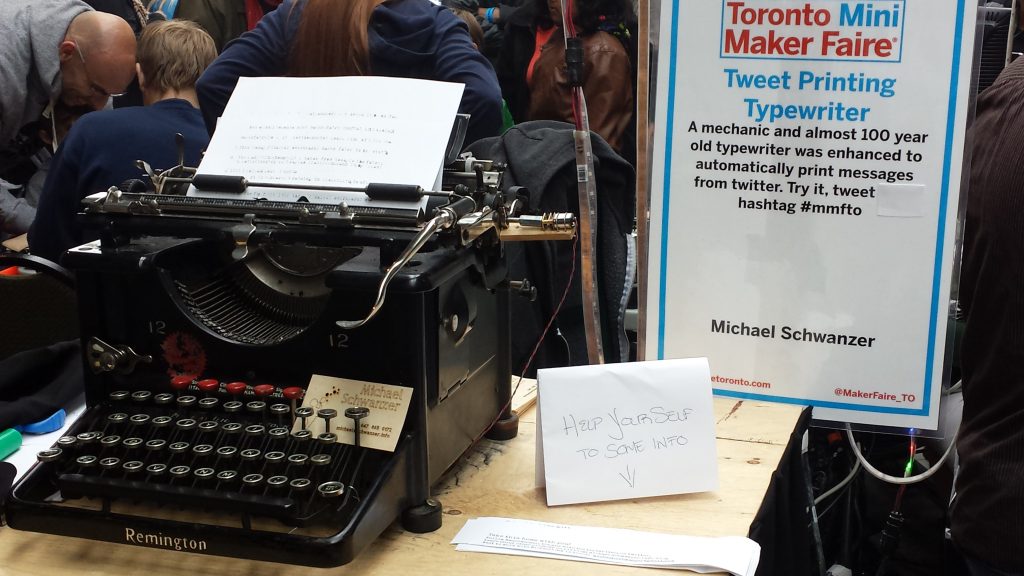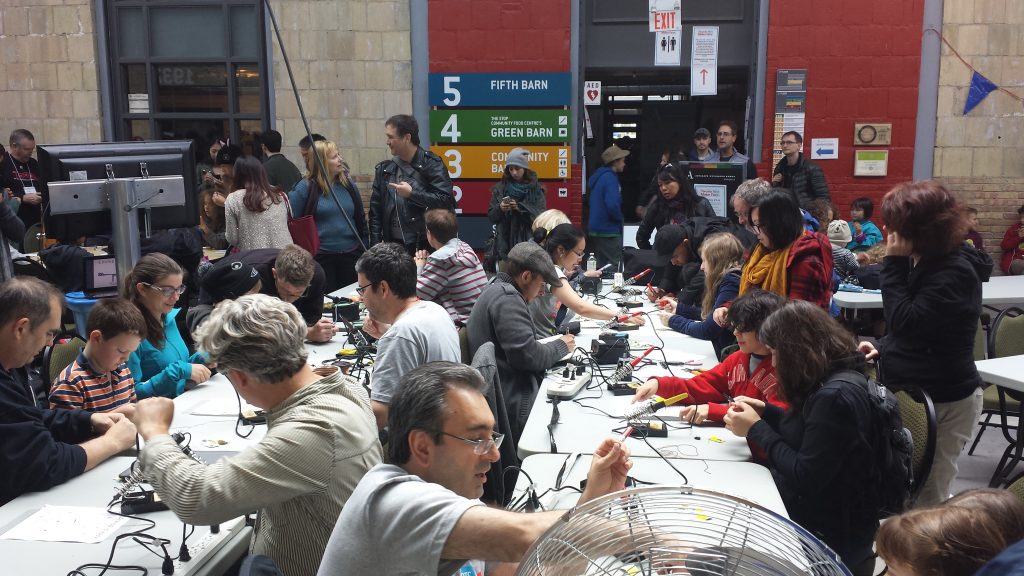This weekend Toronto’s Wychwood Barns transformed into a world of robots, wearable lights and 3D printed objects. The two-day Toronto Mini Maker Faire, now in its second year, attracted an audience of over 4,000 people despite the rainy weather. The Faire was a true Maker celebration and offered a smorgasbord of emerging tech that would leave any geek drooling for days.
One of the many makers to be part of this year’s festivities was Michael Schwanzer. At first glance, Schwanzer’s exhibit seemed to be out of place. His 100-year old antique typewriter sat alone on a podium against a backdrop of R2D2 robots and a curtain of moving LED lights. But Schwanzer’s old time tech was also moving. The mechanical typewriter was spewing out pages of 140-character sentences. Schwanzer explained that he had rigged the typewriter to automatically print messages from Twitter using the hashtag #mmfto.
Schwanzer epitomizes the definition of a Maker. Schwanzer saw how he could improve something like an antique typewriter and give it new life with a circuit board, some soldering, a few wires and connectivity to the internet. He tinkered, he hacked and he created.
Makers are not just technologists. “The definition of Maker is so broad,” explained Marianne Mader, co-founder of MakerKids, a makerspace for youth in Toronto. “A lot of people associate it with new technology but it can be crafting or making something with your hands. The Maker culture is all about breaking down the barriers between disciplines and merging technology, science and art because whatever your creation is it could involve all of it.”
Of course technology has become a huge part of the Maker Movement especially with robotic parts like motors, accelerometers and gyroscopes becoming cheaper and more widely available. The introduction of the technology previously not available to consumers, like 3D printers, has also dramatically impacted the Maker community.
What has also caused the Maker community to flourish is the ability for Makers to turn their passion into a business. Crowdfunding sites like Kickstarter and Indiegogo are helping to turn hobbysists into entrepreneurs. This was very evident from many of the exhibitors at Maker Faire TO, with active or past campaigns including 3D scanner Matterform, DIY robotics kit Motiph and hackerspace Hacklab.TO.
But the most inspiring thing to see at Maker Faire wasn’t the technology at all. It was the children. Their natural enthusiasm and curiosity to create was a perfect match for the Makers who have been able to keep this childlike quality into their adulthood.
In just an hour of being at the Faire, I witnessed a little boy create 3D printed images by modelling shapes using Leap Motion gestures. A little girl beamed with joy as she showed off her keyboard made of gummy worms and sensors. The knowledge sharing between Makers and kids is what Hacker Collective Hacklab.to member, Alex Orchard, called “cross-generational open source sharing”. And it was truly inspiring.
It was very evident that behind all of the circuits, sensors and wires what Maker Faire was really building was the next generation of Makers. And the wonder on each kids face as they made something come alive was proof enough that they were succeeding.
If you want to learn more about Makers and the Maker Movement, we’ve got a fantastic docu-short by TVO, one of the sponsors of Mini Maker Faire, below.




